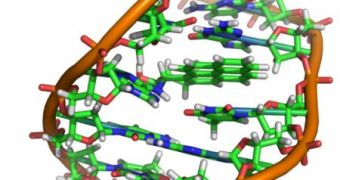One of the most baffling questions related to how life evolved on the planet refers to how the first self-replicating chemicals managed to form more complex structures that also featured genetic material. These simple substances were a long way away from RNA and DNA, the nucleic acids that underlie life today, and their replication process was very prone to copying errors. In fact, it is estimated that about 20 percent of early RNA replication was performed poorly, resulting in issues that would have compromised the integrity of the entire structure.
The real issue, experts say, is that most advances and new evolutionary traits that replication generally promotes would have been essentially drowned in a sea of copying errors, rendering any further progress impossible. A group of scientists believes it may have discovered a mechanism that circumvents this apparent paradox. Experts say that the presence of errors may have triggered an automated shut-down mechanism that would have stopped the replication of the chemicals that were in the process of multiplying erroneously. The fundamental nature of the simple chemicals could therefore have prevented errors by itself.
As a direct result, only error-free replication would have progressed, paving the way for evolution into more complex structures. Details of the proposal were published in the April 1 issue of the esteemed Journal of the American Chemical Society, by researchers at the Harvard University. The study was led by systems biologist Irene Chen. “A chemical system with this property would be able to propagate sequences long enough to have function,” she says, quoted by Wired. The scientist says that RNA (ribonucleic acid) was most likely the initial spark of life.
This molecule predates DNA (deoxyribonucleic acid), is found in all genes of all living things, and forms the basis for the most basic self-replicating structures in nature. In their studies, the Harvard researchers noticed that DNA is in the habit of stalling at times, when its self-replication process results in errors. The experts hypothesized that a similar mechanism could have been at work in RNA as well, and then set out to prove it. In order to do that, they used very simple and short strands of DNA, because working with unstable RNA molecules was impractical.
The material was then placed in a mixture of compounds that emulated the structure of the atmosphere and oceans of early Earth, and tagged the DNA strands with fluorescent protein markers. This allowed them to keep a close eye on what was happening with these simple structures. “They’ve gone beyond the paradox. Whether that’s what happened, we don’t know, but it’s a conceptual leap forward,” says of the work Harvard University systems biologist Bodo Stern, who was not involved with the study.

 14 DAY TRIAL //
14 DAY TRIAL //